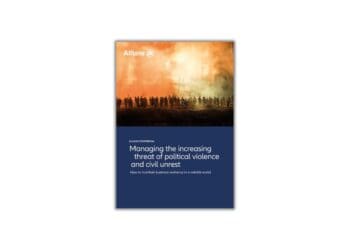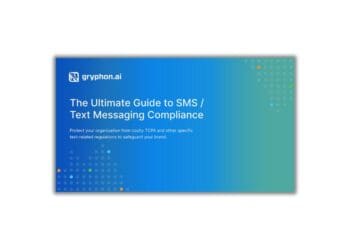The Office of Management and Budget (OMB) issued its new guidance on December 26, 2013 for the federal award programs, the OMB Uniform Guidance: Administrative Requirements, Cost Principles, and Audit Requirements for Federal Awards, otherwise known as the Omni Circular. The Omni Circular applies to state and local governments, Indian tribes, higher education institutions and not-for-profit organizations for all federal awards. The goal of the Omni Circular is to improve the efficiency and effectiveness of federal grants management by streamlining eight previous OMB Circulars (A-102, A-110, A-89, A-21, A-87, A-122, A-133 and A-50), thereby eliminating conflicting and duplicative guidelines. The Guidance is divided into three sections: Administrative Requirements, Cost Principles and Audit Requirements.
Although the Omni Circular took effect December 26, 2013, non-federal (nonprofit) entities have until December 26, 2014 to fully comply, with the following exceptions:
- Audit Requirements section (Subpart F), will apply to audits of the fiscal years of non-federal entities that begin on or after December 26, 2014. In other words, those whose fiscal year ends on December 31, this will be your December 31, 2015 audit. For those with a June 30 fiscal end, this will be your June 30, 2016 audit.
- Administrative Requirements and Cost Principles sections will apply to new awards and to additional funding (funding increments) to existing awards made after December 26, 2014.
To avoid noncompliance, below are some significant changes nonprofits need to be cognizant of:
Added Conflict of Interest (COI) Guidance (§200.112) – Requires disclosure in writing of any potential conflict of interest.
Organizational Conflict of Interest – This is a new requirement! If the non-federal entity has a parent, affiliate or subsidiary organization that is not a state government, local government or Indian tribe, the non-federal entity must also maintain written standards of conduct covering organizational conflicts of interest. Organizational conflicts of interest mean the non-federal entity’s inability to remain partial during the procurement process involving a related organization due to relations with a parent company, affiliate or subsidiary organization.
Mandatory Disclosures (§200.113) — Requires disclosure in writing of all violations of federal criminal law involving fraud, bribery or gratuity violations potentially affecting the federal award.
Definition of Supplies (§200.94) — If the acquisition cost of computer equipment is less than the lesser of either the capitalization level established by the non-federal entity for financial statement purposes, or $5,000 (regardless of the length of the equipment’s useful life), it should be considered a supply (as opposed to an equipment). In this case, computing devices are subject to the administrative requirements of supplies, which are less burdensome. Keep in mind that the Omni Circular now includes a new micro-purchase procurement method, which is meant to be more simple and straightforward (see more about this below). This method applies to the purchase of supplies or services when the aggregate dollar amount does not exceed $3,000. If the non-federal entity considers the price reasonable, these purchases may be awarded without soliciting competitive quotes.
Note that according to §200.33 of the Omni Circular, equipment is tangible personal property valued at $5,000 or more and with a life of more than one year. Property purchased with federal awards valued at $5,000 or more must be accounted for through the use of federally mandated reporting forms. However, if your threshold for capitalizing equipment is lower, you must use the lower threshold when equipment is purchased with federal awards.
If your capitalization threshold is lower, consider raising it to the federal maximum of $5,000. Otherwise you could be reporting on lots of equipment purchased with federal money.
Procurement Guidelines (§ 200.317 – §200.326) — Requires all non-federal entities to have and follow documented (written) procurement procedures. The five allowable methods of procurement are noted below:
Method #1 – Micro-Purchase (simplest and most informal of the five methods). This is the only new procurement method under this new guidance! Key components are:
- Quotations are not required for supplies and services whose aggregate dollar amount does not exceed $3,000 ($2,000 for purchases subject to Davis-Bacon Act) or if the price is reasonable.
- To extent practicable, distribute purchases equitably among qualified suppliers.
- Example: A recipient that needs to buy $500 of office supplies (pencils, writing pad and ink cartridges) can go to an office supply store and purchase the items without having to first request quotes. When office supplies need to be replenished, the recipient should purchase supplies from a different store. Be mindful that receipts will still need to be kept for accounting and auditing purposes.
Method #2 – Small Purchase (between $3,000 to $150,000)
- This procurement method is relatively simple and informal.
- Applies to securing services, supplies or other property that do not cost more than the Simplified Acquisition Threshold (currently $150,000). Keep in mind that the $150,000 figure changes periodically, so stay afloat of any changes.
- Price or rate quotations from an adequate number of qualified sources need to be obtained.
- The standards do not define how many quotations constitute an “adequate number.” This will be a matter of judgment.
- For good measure, your written procurement procedures should define what is meant by “adequate.” Is one quotation sufficient? Two? Make sure this is clear in your policy.
- Some grants may specifically require a certain number of quotes, so be sure to incorporate that number into your policy as well.
- A cost or price analysis in the vendor/supplier selection process is not required.
Method #3 – Sealed Bid (formal advertising)
- Applies to purchases over $150,000.
- Price is a major factor and a formal process for bidding is generally required.
- Primarily used in construction projects, such as firm-fixed-price contracts.
- Bids are publicly solicited and a firm-fixed-price contract (lump sum or unit price) is awarded to the lowest bidder (in terms of price) whose bid conforms with all the material terms and conditions of the invitation for bids.
Method #4 – Competitive Proposal
- Applies to purchases over $150,000 and generally used when the use of sealed bids are not appropriate.
- Formal Request for Proposal (RFP) with pre-determined evaluation methods for an adequate number of qualified sources is required. In other words, a written method for conducting technical evaluations of the proposals received and for selecting the recipients should be maintained.
- Competitive proposals are typically conducted with more than one source submitting an offer and either a fixed-price or cost-reimbursement type contract is awarded.
Method #5 – Sole Source
- Open competition is not available in the procurement process and, in these cases, the sole source method must be followed. Open competition may not be available due to the uniqueness of the product/service or the immediacy of the need.
- This non-competitive method is available for procurements of any dollar amount.
- Because there is no competition, it must be authorized by agency (or pass-through entity for sub-recipients). Note that there are exceptions to pre-approval such as certain unique circumstances or a public emergency.
- This method may be used only when one or more of the following circumstances apply:
- The item is available only from a single source.
- The public exigency or emergency for the requirement will not permit a delay resulting from competitive solicitation.
- The federal awarding agency or pass-through entity expressly authorizes noncompetitive proposals in response to a written request from the non-federal entity.
- After solicitation of a number of sources, competition is determined inadequate.
Other Procurement Items to Be Aware Of
Records to sufficiently detail the history of procurement must be maintained. At a minimum, this includes:
- The rationale for the method of procurement.
- Selection of the contract type.
- Contractor selection or rejection.
- Basis for the contract price.
- Section 200.319 contains language that prevents contractors who develop or draft specifications, requirements, statements of work and invitations for bids or requests for proposals from competing for such awards/contracts.
Indirect Costs — The Omni Circular streamlined the indirect cost (IDC) rate process to reduce the administrative burden. There are three major changes for IDC rate under the Omni Circular:
- For non-federal entities that have received a negotiated IDC rate, that rate must be accepted by all federal awarding agencies.
- Non-federal entities that have never received a negotiated IDC rate may choose to use an automatic de minimis rate of 10 percent of modified total direct costs. If selected, this rate must be used on all federal awards and may be used indefinitely until a rate is negotiated and approved by the applicable cognizant agency. This is an important new provision for nonprofits, which had not been previously reimbursed by their higher-tiered grantors.
- Organizations with an approved federally negotiated IDC can now apply for a one-time extension of up to four years without further negotiation. This extension is subject to review by the cognizant agency. Once approved, it can’t be renegotiated for the extended period.
Administrative and Clerical Salary as Direct Costs — Generally administrative and clerical costs were treated as indirect costs, but prior cost principles stated that they may be charged directly if they could be allocated specifically to one award regardless of what activities they supported. This led to inconsistent treatment of administrative costs among different non-federal entities/awards; some were charged as indirect, while others were charged as direct costs. However, under Section 200.413 of the Omni Circular, administrative and clerical costs must be charged as indirect unless the following criteria are met:
- The services are integral to a project or activity.
- Individuals involved can be specifically identified with the project or activity.
- Costs are explicitly included in the budget or have prior written approval of the awarding agency.
- The costs are not also recovered as indirect costs.
Compensation — Specific requirements for personnel activity reports previously required under OMB A-87 have been removed. A nonprofit entity’s documentation for salaries and wages now is meant to be dictated by its internal control structure.
- Section 200.430, Compensation-personal services, paragraphs A to H, provides an in-depth guidance for how non-federal entities can charge personnel costs to the federal award. This section addresses position appointment, reasonableness, outside activities, compensation changes, incentive compensation and salary bases. Paragraph I speaks to documentation standards to accurately reflect the work performed and documentation of the internal control system.
- Salaries and wages for nonexempt (non-professional) employees must be supported by records indicating the total number of hours worked each day.
- If estimates are used to charge personnel costs to federal awards during interim periods, a review process must be established to ensure that estimates are based on reasonable approximations of actual activity. Budget estimates alone aren’t sufficient to support personnel costs. Be vigilant to have strong internal controls reviewing estimates, if used.
- Non-federal entities that can’t meet standard documentation requirements and support an internal control system may be required by the federal awarding agency to provide personnel activity reports, certifications or other documentation that support charges to the award.
Final Thoughts
Although these changes may appear daunting, digesting it little by little will help you not only better understand the information, but retain it for the long haul so that it can be better adhered to.








